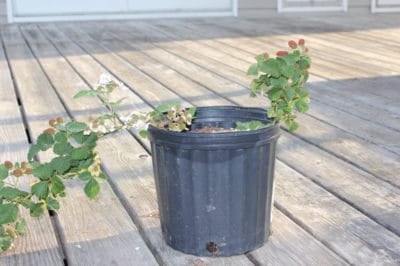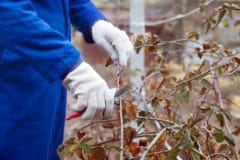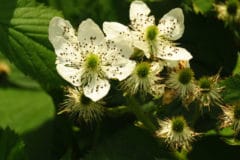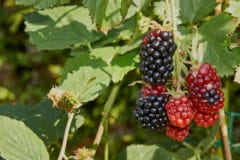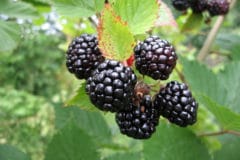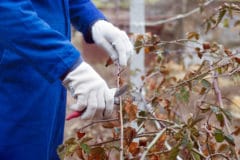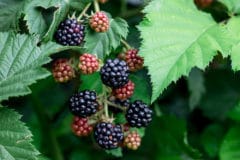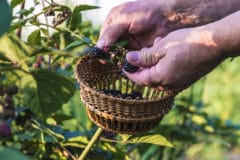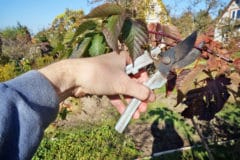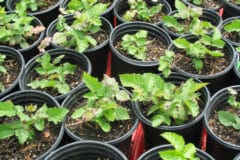Container-Grown Blackberries: the Advantages
Growing blackberries in containers actually as some advantages over growing them in the ground:
- Putting the containers on plant caddies lets you move them as needed to get six hours of sun each day.
- The dwarf blackberry cultivar suitable for container life stays small enough for easy picking and pruning.
- Watering and fertilizing goes much more quickly.
The ‘Baby Cakes’ Cultivar
The only dwarf blackberry cultivar currently available for container growing is ‘Baby Cakes’ (Rubus fruticosus ‘Baby Cakes’). It grows in USDA plant hardiness zones 4 through 8. ‘Baby Cakes’ yields two annual crops — in summer its second-year canes and between fall and frost on its first-year ones.
The Container and Potting Soil
Plant ‘Baby Cakes’ in a 24- to 36-inch plastic pot or half barrel with drainage holes. Treat yourself to a plant caddy; otherwise, moving the container will be very difficult.
Grow your blackberry in a 1:1 mixture of organic compost and commercial potting soil. The soil provides good drainage. The compost contributes a slow, steady stream of nutrients and the microbes that make them easy for the roots to absorb.
Watering and Fertilizing
Check your container blackberry daily by inserting a finger into the soil. If it feels dry up to your first knuckle, water until water flows from the drainage holes. On very hot or windy days, you may need to water twice.
Fertilize ‘Baby Cakes’ when new growth emerges in early spring and again after it flowers. Apply an organic, balanced liquid fertilizer with equal N-P-K numbers at the label’s recommended rate.
Pruning
To prune ‘Baby Cakes’:
- Watch for new green growth emerging from the soil and some of the previous year’s canes in early spring.
- Prune all canes with no signs of growth back to the soil.
- Prune all the dead tips from canes with new growth.
- Leave the shoots emerging from the soil intact. They’ll become fruiting canes the following spring.
Winter Care
In zones 7 and 8, ‘Baby Cakes’ can remain in an exposed location through the winter. In zones 4 through 6, move it to an enclosed but unheated area and water just often enough to keep the soil slightly moist. Move it outside when nightly temperatures are consistently above 27°F (-2.8°C).
